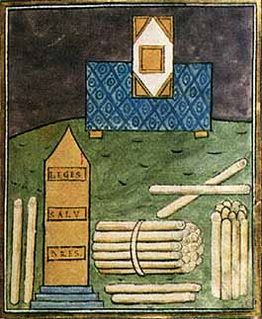 W
WCount is a historical title of nobility in certain European countries, varying in relative status, generally of middling rank in the hierarchy of nobility. The etymologically related English term "county" denoted the land owned by a count. Equivalents of the rank of count exist or have existed in the nobility structures of some non-European countries, such as hakushaku during the Japanese Imperial era.
 W
WThe Dominate is the name sometimes given to the "despotic" later phase of imperial government, following the earlier period known as the "Principate", in the ancient Roman Empire. This phase is more often called the Tetrarchy at least until 313 when the empire was reunited.
 W
WThe history of the Roman Empire covers the history of ancient Rome from the fall of the Roman Republic in 27 BC until the abdication of Romulus Augustulus in AD 476 in the West, and the Fall of Constantinople in the East. Rome had begun expanding shortly after the founding of the Republic in the 6th century BC, though it did not expand outside of the Italian Peninsula until the 3rd century BC. Civil war engulfed the Roman state in the mid 1st century BC, first between Julius Caesar and Pompey, and finally between Octavian and Mark Antony. Antony was defeated at the Battle of Actium in 31 BC. In 27 BC the Senate and People of Rome made Octavian imperator ("commander") thus beginning the Principate, the first epoch of Roman imperial history usually dated from 27 BC to AD 284; they later awarded him the name Augustus, "the venerated". The success of Augustus in establishing principles of dynastic succession was limited by his outliving a number of talented potential heirs: the Julio-Claudian dynasty lasted for four more emperors—Tiberius, Caligula, Claudius, and Nero—before it yielded in AD 69 to the strife-torn Year of Four Emperors, from which Vespasian emerged as victor. Vespasian became the founder of the brief Flavian dynasty, to be followed by the Nerva–Antonine dynasty which produced the "Five Good Emperors": Nerva, Trajan, Hadrian, Antoninus Pius and the philosophically inclined Marcus Aurelius. In the view of the Greek historian Dio Cassius, a contemporary observer, the accession of the emperor Commodus in AD 180 marked the descent "from a kingdom of gold to one of rust and iron"—a famous comment which has led some historians, notably Edward Gibbon, to take Commodus' reign as the beginning of the decline of the Roman Empire.
 W
WThe quaestor sacri palatii, in English: Quaestor of the Sacred Palace, was the senior legal authority in the late Roman Empire and early Byzantium, responsible for drafting laws. In the later Byzantine Empire, the office of the quaestor was altered and it became a senior judicial official for the imperial capital, Constantinople. The post survived until the 14th century, albeit only as an honorary title.
 W
WSapaudia or Sabaudia was an Alpine territory of late antiquity and the Dark Ages.
 W
WThe Tungri were a tribe, or group of tribes, who lived in the Belgic part of Gaul, during the times of the Roman Empire. Within the Roman Empire, their territory was called the Civitas Tungrorum. They were described by Tacitus as being the same people who were first called "Germani" (Germanic), meaning that all other tribes who were later referred to this way, including those in Germania east of the Rhine river were named after them. More specifically, Tacitus was thereby equating the Tungri with the "Germani Cisrhenani" described generations earlier by Julius Caesar. Their name is the source of several place names in Belgium, Germany and the Netherlands, including Tongeren, Tongerlo Abbey, and Tongelre.
 W
WThe title vir illustris is used as a formal indication of standing in late antiquity to describe the highest ranks within the senates of Rome and Constantinople. All senators had the title vir clarissimus ; but from the mid fourth century onwards, vir illustris and vir spectabilis were used to distinguish holders of high office.